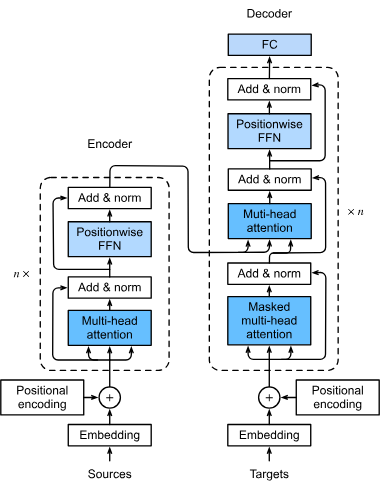
Transformers
Transformers are a revolutionary neural network architecture that has transformed artificial intelligence, especially in natural language processing. Introduced...
Transformers are neural networks that use attention mechanisms to efficiently process sequential data, excelling in NLP, speech recognition, genomics, and more.
A transformer model is a type of neural network specifically designed to handle sequential data, such as text, speech, or time-series data. Unlike traditional models like Recurrent Neural Networks (RNNs) and Convolutional Neural Networks (CNNs), transformers utilize a mechanism known as “attention” or “self-attention” to weigh the significance of different elements in the input sequence. This allows the model to capture long-range dependencies and relationships within the data, making it exceptionally powerful for a wide range of applications.
At the heart of a transformer model lies the attention mechanism, which allows the model to focus on different parts of the input sequence when making predictions. This mechanism evaluates the relevance of each element in the sequence, enabling the model to capture intricate patterns and dependencies that traditional models might miss.
Self-attention is a special form of attention used within transformers. It allows the model to consider the entire input sequence simultaneously, rather than processing it sequentially. This parallel processing capability not only improves computational efficiency but also enhances the model’s ability to understand complex relationships in the data.
A typical transformer model consists of an encoder and a decoder:
Both the encoder and decoder are composed of multiple layers of self-attention and feedforward neural networks, stacked on top of each other to create a deep, powerful model.
Transformers have become the backbone of modern NLP tasks. They are used in:
Transformers enable real-time speech translation and transcription, making meetings and classrooms more accessible to diverse and hearing-impaired attendees.
By analyzing the sequences of genes and proteins, transformers are accelerating the pace of drug design and personalized medicine.
Transformers can identify patterns and anomalies in large datasets, making them invaluable for detecting fraudulent activities and generating personalized recommendations in e-commerce and streaming services.
Transformers benefit from a virtuous cycle: as they are used in various applications, they generate vast amounts of data, which can then be used to train even more accurate and powerful models. This cycle of data generation and model improvement continues to advance the state of AI, leading to what some researchers call the “era of transformer AI.”
Unlike RNNs, which process data sequentially, transformers process the entire sequence at once, allowing for greater parallelization and efficiency.
While CNNs are excellent for image data, transformers excel in handling sequential data, providing a more versatile and powerful architecture for a broader range of applications.
A transformer model is a neural network architecture designed to process sequential data using an attention mechanism, enabling it to capture relationships and dependencies within the data efficiently.
Unlike RNNs, which process data sequentially, transformers process the entire input sequence at once, allowing for greater efficiency. While CNNs are well-suited for image data, transformers excel in handling sequential data such as text and speech.
Transformers are widely used in natural language processing, speech recognition and synthesis, genomics, drug discovery, fraud detection, and recommendation systems due to their ability to handle complex sequential data.
Try FlowHunt to create custom AI chatbots and tools, leveraging advanced models like transformers for your business needs.
Transformers are a revolutionary neural network architecture that has transformed artificial intelligence, especially in natural language processing. Introduced...
A Generative Pre-trained Transformer (GPT) is an AI model that leverages deep learning techniques to produce text closely mimicking human writing. Based on the ...
Text Generation with Large Language Models (LLMs) refers to the advanced use of machine learning models to produce human-like text from prompts. Explore how LLM...
